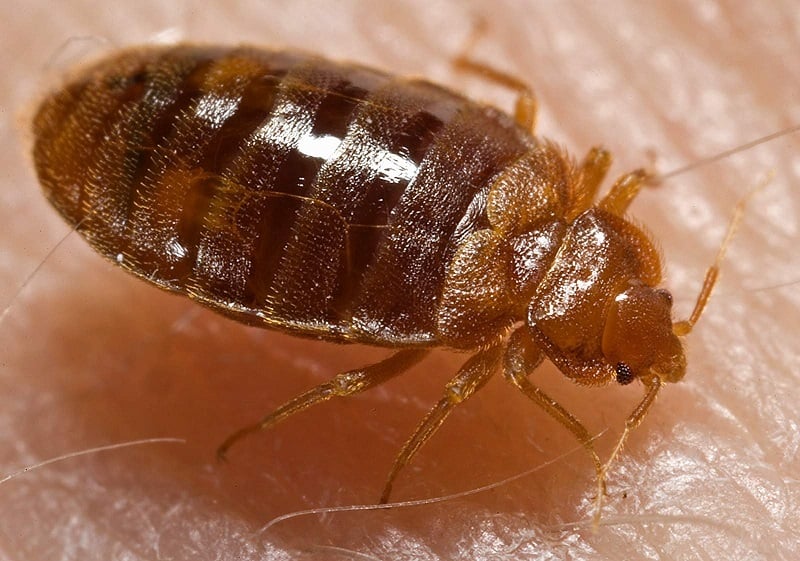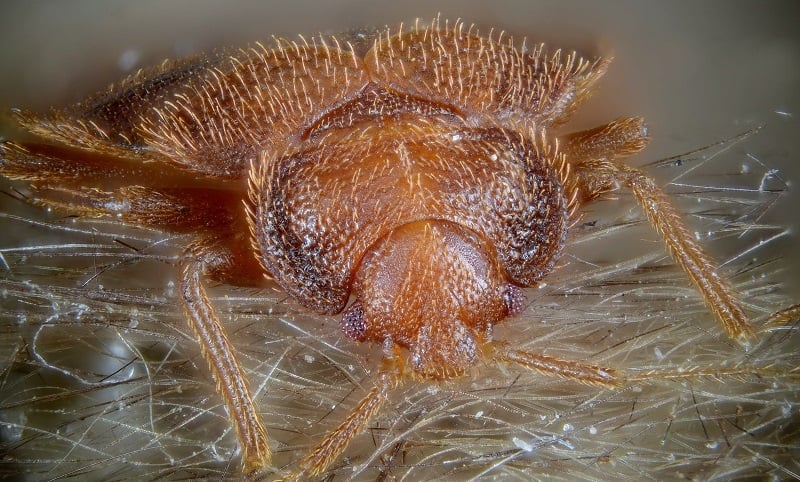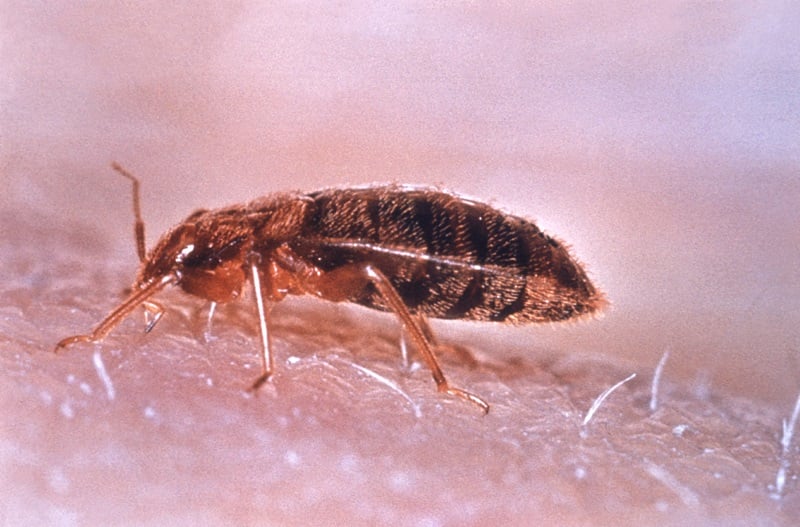Bedbug

Image Source: Wikipedia
These small, oval bugs feed off of human and animal blood, usually feasting when the host is asleep. Bedbugs can thrive pretty much anywhere, but often congregate inside bedrooms, where their thin, flat bodies allow them to hide within box springs and mattresses, behind paintings or nestled into shelves and drawers.
As a nocturnal insect, bedbugs usually emerge at night between 10pm and 6am. They feast by piercing one’s skin, ingesting blood through a beak for three to ten minutes, and then returning to their hiding spot. After a feeding, the once-thin brownish bug is now fat, engorged and red. While these nasty night dwellers don’t transmit deadly diseases, their bites can cause painful infections, allergic symptoms, and even psychological problems.

Image Source: Wikimedia Commons

Image Source: Michigan State University
A female bedbug can lay thousands of eggs, each of which is just about the size of a speck of dust. In optimal conditions, each of these creepy insects can grow into a mature bedbug and wreak havoc on unsuspecting sleepers.
For this reason, bedbugs are incredibly hard to get rid of, making infestations more than a nightmare for those who are affected. Learn more (if you dare) by watching this intriguing clip from National Geographic:
Next up: The scariest part is that even after you’ve cut off their heads, they can still live for weeks…





